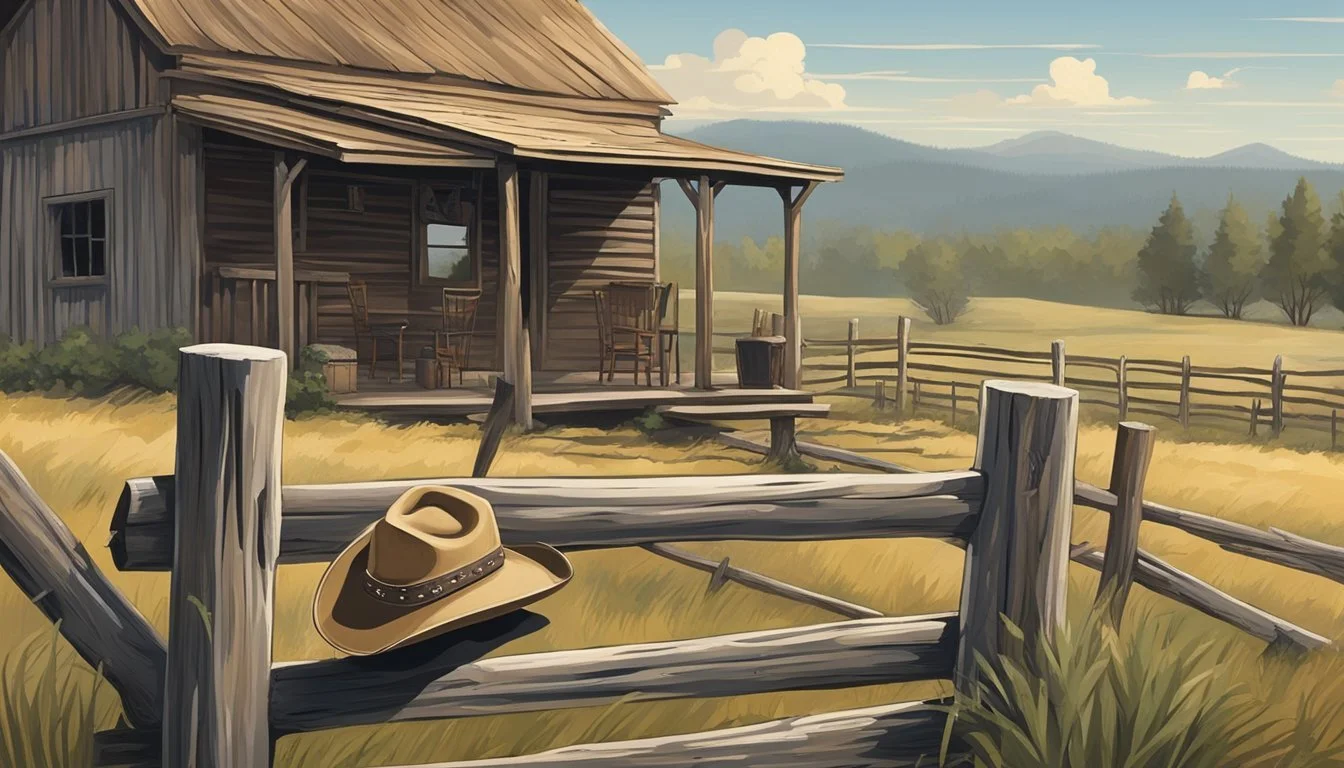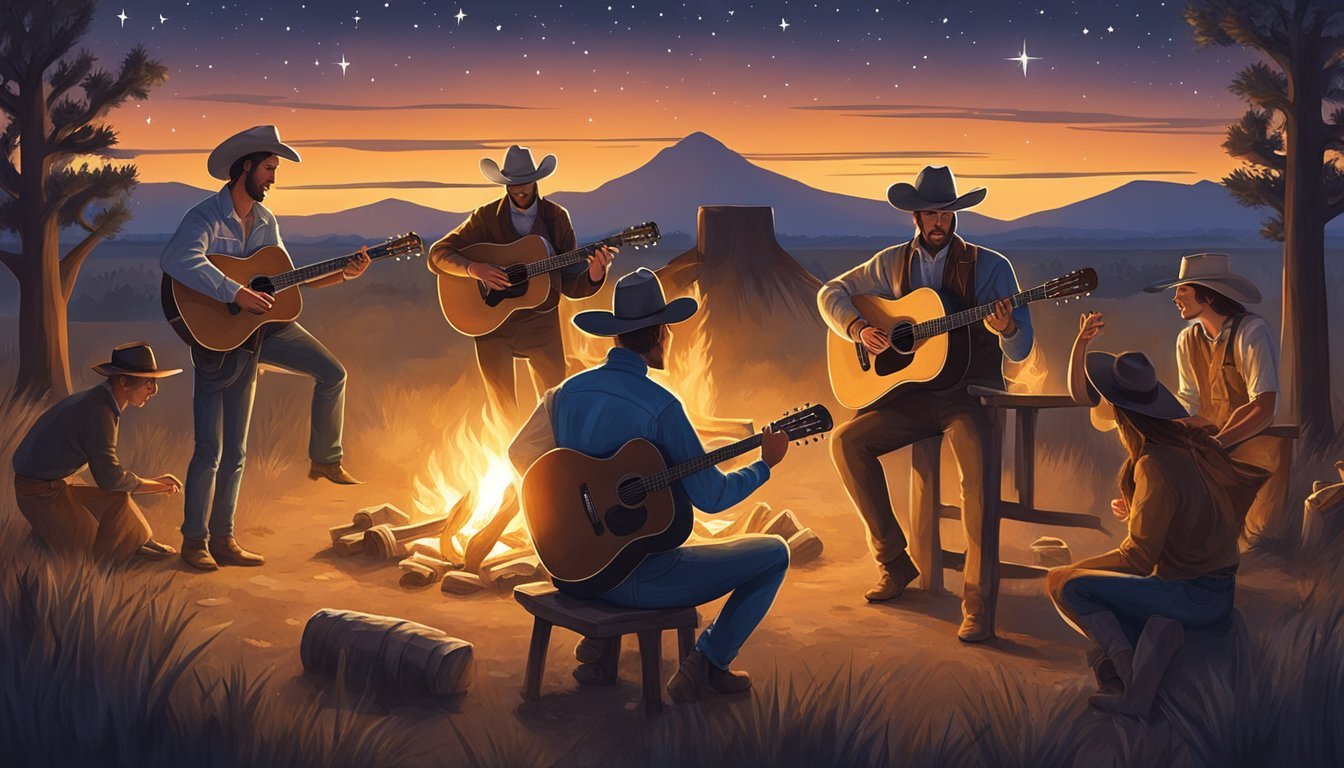The Texas Cowboy's Impact on Country Music and Line Dancing Evolution
The Texas cowboy has long been an emblematic figure in American folklore, embodying the spirit of rugged independence and a life inextricably linked to the vast expanse of the West. This storied image has not only shaped cultural narratives but also strongly influenced the evolution of country music. Pioneering artists who once worked as cowboys brought the realities and mythos of their lifestyle into their songs, creating a genre that celebrated the day-to-day experiences and the romanticized ideals of the cowboy life.
As country music evolved, it maintained its roots in the stories and sounds of the Texan cowboy culture. The genre expanded, transforming into a tapestry enriched by various musical styles, including Western swing which emerged in Texas in the 1920s and 1930s, weaving together the country's heartstrings with danceable rhythms. This fusion of spirited music and the cowboy image has also played a significant role in popularizing line dancing, a synchronized dance tradition that echoes the communal experiences of cowboys gathered around a campfire or in a dance hall.
In Texas, the legacy of the cowboy is inseparable from its cultural output, particularly in country music and dance. Establishments like Gilley's and Billy Bob's Texas, which have become institutions within the country music scene, continue to celebrate and propagate the cowboy's cultural footprint. It was here and in similar venues where many Texans, and indeed Americans from across the country, donned their boots, embraced the art of line dancing, and kept the cowboy spirit alive through song and dance, creating a living homage to the enduring impact of the lone star state's cowboys.
The Origins of the Texas Cowboy in Country Music
The Texas cowboy's contribution to country music is a rich narrative of cultural integration and artistic development, featuring emblematic figures and evolving through cinema and radio.
Emergence of Cowboy Songs and Artists
Cowboy songs, emerging from the life experiences of the Texas cowboy, became a cornerstone of country music. Early artists like Jimmie Rodgers blended the cowboy's rugged experiences with southern sounds, bringing the cowboy lifestyle to a wider audience. Notable songs like "Tumbling Tumbleweeds" by the Sons of the Pioneers became anthems of the West, romanticizing the cowboy lifestyle.
Key Artists:
Jimmie Rodgers
Sons of the Pioneers
Notable Songs:
"Tumbling Tumbleweeds"
Cultural Influence of Western Music
Western music, rooted in the culture of the American West and specifically Texas, has influenced various aspects of pop culture. Elements like the ten-gallon hat and phrases like "Back in the Saddle Again" have permeated through movies and music, solidifying the cowboy image in American identity.
Pop Culture Icons:
Ten-gallon hats
"Back in the Saddle Again"
Icons of the Cowboy Music Genre
Gene Autry and Roy Rogers stand as icons in the cowboy music genre. Autry, known as the "Singing Cowboy," was featured in "In Old Santa Fe," and Rogers headlined "The Phantom Empire," with his wife Dale Evans. Both were instrumental in shaping the genre, later being inducted into the Country Music Hall of Fame.
Hall of Fame Legends:
Gene Autry
Roy Rogers
The Hollywood Cowboy: Film and Representation
Hollywood amplified the cowboy's appeal with films that featured singing cowboys in heroic roles. Smiley Burnette, accompanying Gene Autry in films, and Tex Ritter, portraying cowboys on screen, influenced how audiences perceived the cowboy's role in country music and American life.
Hollywood Cowboys:
Smiley Burnette
Tex Ritter
Film Contributions:
"In Old Santa Fe"
"The Phantom Empire"
Development of Line Dancing in Texas
In Texas, line dancing and its evolution are deeply connected with the state's rich heritage of country music and honky-tonk culture. The dance forms a symbiotic relationship with venues across the state, shaping the modern cultural landscape of Texas.
The Evolution of Line Dance Styles
Line dancing in Texas has grown from simple, repeated steps to a broad spectrum of dances including the classic two step and the lively West Coast swing. Rooted in the dances brought by Western pioneers, today's line dance styles merge traditional movements with influences from other genres. Such variety reflects the state's diverse cultural influx and has made line dancing an integral part of the Texan identity.
Country Dance Halls and Venues
Iconic dance halls like The Broken Spoke and The White Horse in Austin serve as the epicenters for line dancing, offering live music and a welcoming environment for both seasoned dancers and newcomers. Locations such as Mavericks in Dallas also cater to the community's passion for country dancing, providing ample floor space and hosting regular hoedowns. Operating hours in these venues often extend into the late night, highlighting their role as social hubs.
Line Dancing's Place in Modern Texas Culture
Despite the rise of pop culture, line dancing remains a vital component of American popular culture, particularly within Texas. Occupying both a nostalgic and contemporary space, line dancing continues to be cherished in dance halls across the state. In urban centers like Austin and Fort Worth, a resurgence in country aesthetics alongside venues that offer lessons and events, reaffirm line dancing's steady place within modern Texan culture.
Country Music and Texas Today
Today, Texas continues to stamp its distinctive brand on country music, with Austin, Dallas, and Fort Worth at the bleeding edge of the genre’s evolution. Simultaneously, line dancing flourishes in local bars, resonating with both the traditional and the contemporary beats of country tunes. The state's offerings echo globally, fulfilling its role as a pivotal axis for country music trends.
Country Music's Evolution in the Lone Star State
The Texan sound has been a linchpin in country music's story. Grounded in the works of icons like George Strait, the state has a rich history that continues to nurture the genre’s growth. In sprawling metropolises such as Dallas and Austin, there is a fusion of traditional melodies and modern sensibilities. Country bars across the state keep the sense of heritage alive, often adding a modern twist to the classic margarita and adapting the cover charge to suit the new-age country concert experience.
Contemporary Line Dancing Scene
Line dancing, a gem in the crown of Texan culture, has evolved beyond its classic moves. Today's country dance floors host a blend of age-old steps and innovative choreography, catering to the rhythm of both golden oldies and current chart-toppers. In venues throughout Texas, from the neon-lit dancehalls of Fort Worth to the lively districts of Austin, enthusiasts of all skill levels come together, emphasizing the state's dance tradition's vitality and communal spirit.
Texas's Influence on Global Country Music Trends
Texas's cultural signature radiates beyond its borders, influencing country music globally. The Hollywood portrayal of the Texan cowboy has reinforced the global appeal of the American West, further enhancing the reach of country music. Moreover, Texan artists have often crossed over to the world music scene, fostering a symbiotic relationship where Texas propounds its own brand of country while embracing diverse musical influences. This trend underscores the state's role in shaping not just the future of country music but also its resonance with worldwide audiences.
Rodeos and Social Gatherings
Rodeos have long served as a cultural hub in Texas, intertwining the traditions of cowboy heritage with the vibrant threads of country music and dance. These events are not just competitions; they're social cornerstones where live performances resonate and dance floors come alive with line dancing and the two-step.
Rodeo's Role in Preserving Cowboy Culture
Rodeos are emblematic of the Texan spirit, capturing the essence of both the state's history and its enduring cowboy ethos. Originating from the competitive spirit of cattle handling on the ranches of early Texas, rodeos have evolved into staged events where cowboy skills are not only demonstrated but celebrated. They have become a key element in preserving the traditions and customs inherent to cowboy culture—from the meticulous care of livestock to the highly skilled equestrian feats.
Musical Performances and Social Events
At the heart of these gatherings, live music plays a pivotal role. Performances by country singers often accompany rodeos, turning these events into a blend of athletic competition and concert. Given Texas's rich musical legacy, these performances might feature both renowned artists and up-and-coming talents. Dance halls and country bars usually feature a cover charge, providing attendees the opportunity to enjoy a night filled with authentic country melodies and the camaraderie of fellow music and dance enthusiasts.
The Integration of Dance and Social Interaction
Dancing is a vital social component at these events where the line dance and two-step reign supreme. Country dancing, a reflection of Southern heritage, imbues rodeos and concert intermissions with a sense of community and shared joy. In these spaces, such as the famed honky-tonks or multi-generational dance halls, locals and visitors alike step to rhythm as one, often culminating in grand dances that showcase the unity and skill harmonized to the tune of country classics.
The Business of Country Music and Dance
The intersection of country music and line dancing has generated a dynamic business landscape, from invigorating local economies to becoming focal points for tourism.
Economic Impact on Local Communities
Communities across Texas have seen a positive economic influence through the proliferation of country music and line dancing venues. These establishments not only create local jobs but also encourage spending in related sectors. For instance, The Broken Spoke, an iconic dance hall in Austin, not only brings in revenue through cover charges but also boosts nearby hospitality businesses.
Job Creation: Employment opportunities in bars, dance halls, and ranch venues.
Local Spending: Increased activity at local shops, restaurants, and service providers.
Cowboy and Country Themed Bars and Restaurants
Bars and restaurants with a cowboy theme have become staples in Texan cities like Austin and Dallas, providing a unique cultural experience. These locations often serve a range of beverages from craft beers to margaritas and may have an entry fee—cover charge—enhancing their revenue streams.
The White Horse in Austin: A dance hall known for its authentic country feel.
Country Bars in Dallas: Feature live country music attracting both locals and visitors.
At these venues, the ambiance is crafted to cater to the enthusiasts of the genre and those interested in the country lifestyle.
Country Music and Dance as Tourist Attractions
The magnetism of country music and dance halls has turned them into major tourist attractions. Locations such as dance halls and ranch venues offer authentic Texan experiences that draw visitors from all over the world.
Tourist Destinations: Dance halls and venues like The Broken Spoke and The White Horse.
Dallas and Austin: Cities famous for country music and dance, pulling significant tourist numbers.
The allure of these attractions lies not just in the music and dance, but in the promise of experiencing the heart and soul of Texan culture.





